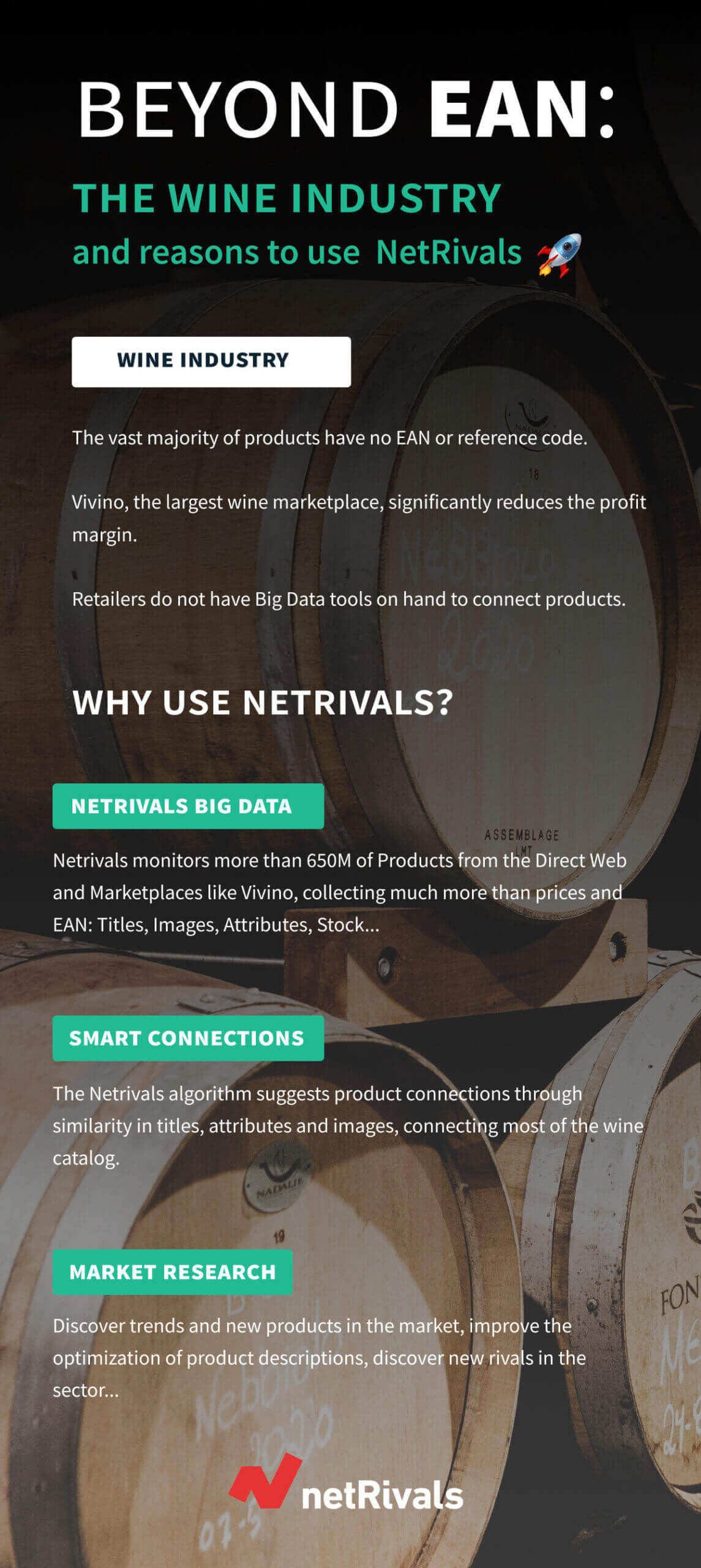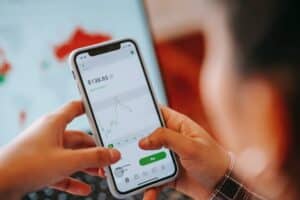The standardization of EAN as the reference code for many of the products that are bought every day represents a significant modernization for all retailers: it has allowed them to categorize their products more easily and has made it possible to study the competition.
However, there are sectors where it is not possible to establish a system of item reference codes. This is the case of the wine industry. The particularity of this industry is that the main product classification is vintage. This has a direct influence on the quality, prestige and price of wine bottles.
This is why wine retailers have a great disadvantage: if they want to study the competition, they do not seem to have tools that can connect their products with those of the competition. In addition to this, the competitiveness of this sector is also important, as it has a marketplace, Vivino, which sells to more than 15 countries and holds a large part of the market share.
Retailers have two options facing Vivino: to sell through the platform, which will significantly reduce the profit margin, or to set prices for the products that will allow them to be competitive.
In order to know the competitive situation of your business in the market, online wine shops need to monitor the products. Due to the nature of this type of product, the connections have to be made in a specific way, as the value changes a lot depending on the attribute (the most important is the vintage) and it is even necessary to have a register of the wines that may be being sold in packs in order to calculate the unit price.
Big Data tools for the wine sector
At first glance, there does not seem to be a solution that would automate the connection processes between different products, since most tools on the market only connect products through reference codes which, in the case of wine, do not work.
This is why Netrivals’ technology stands out. Netrivals, through its Big Data, and thanks to its image and product attribute recognition technology, compiles data on over 650 million products. This data goes beyond the price and the reference code such as the EAN: it compiles relevant information such as photographs, reviews, ratings and promotions. This data is particularly valuable for retailers in this sector to gain a real, in-depth understanding of the market situation, so that they can competitively price their products to improve conversion rates as well as analyse competitors’ pricing patterns and trends.
In addition, Netrivals has detected and monitored over 140K Vivino products, analysing not only prices and attribute attributes, but also active promotions.
Besides the ability to collect product information, Netrivals’ tool provides a solution for wine retailers: Smart Connections. These are connections suggested by the system through attributes, which can be classified into:
Once these suggestions have been made, they can be verified and integrated into product monitoring, gaining a comprehensive understanding of the competitive situation within the wine sector.
Analysis of the competition
Beyond pricing, with these Big Data tools retailers can explore products and identify industry trends and patterns. As a result, it’s possible to analyse the strengths of your catalog and areas for improvement.
In addition, this data is regularly updated, so you can check the market evolution and act accordingly.
This information can be used, among other things, to:
- Improve SEO through the optimisation of your product pages
- Identify new products added by competitors
- Analyse your product range against those of your competitors
- Compare your number of products by brand against your competitors
- Detecting emerging brands
Final Thoughts
The particularities of the wine industry-the lack of EANs and reference codes, strong presence of a marketplace that forces a drop in profit margins and the need to differentiate characteristics (vintage) in products- makes Netrivals a necessary price monitoring tool for all retailers in the sector.
Netrivals’ technology allows the collection of critical product information that goes beyond price and EAN, offering a product connection based on attributes, similarity of titles and images. This tool also allows the insertion of formulas to calculate the unit prices of products, which will give a real and updated image of the competitive situation of the wine sector.







